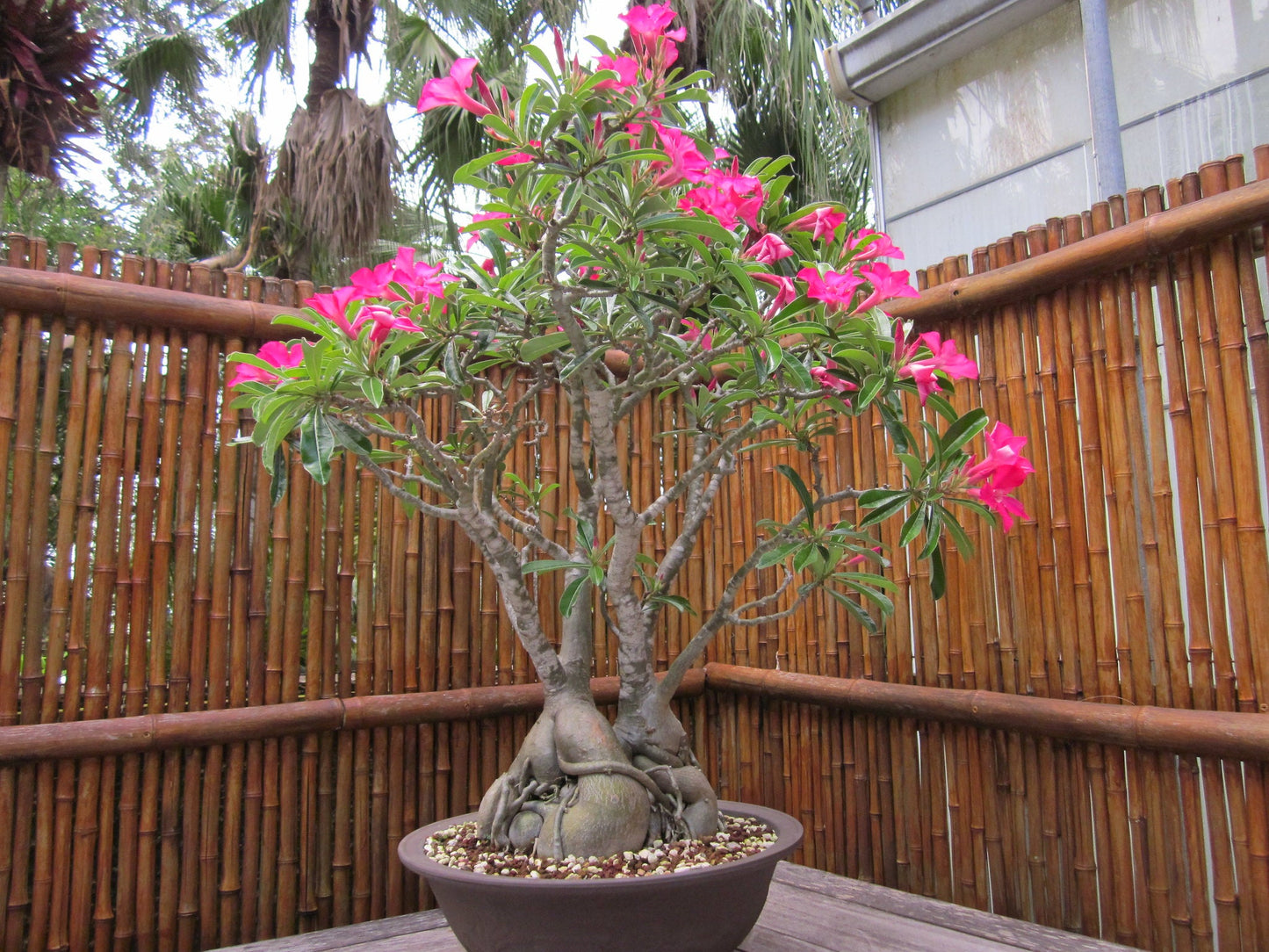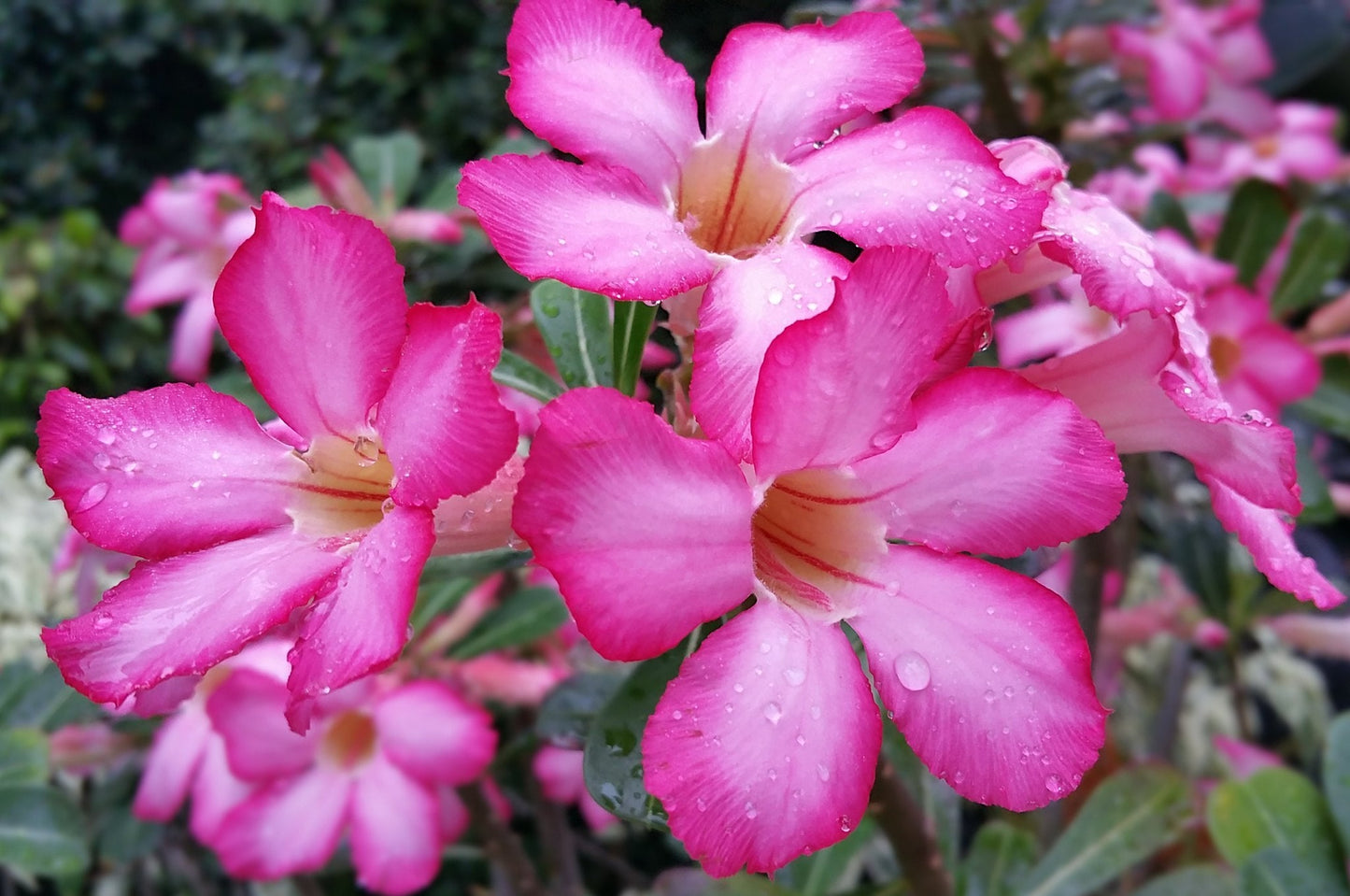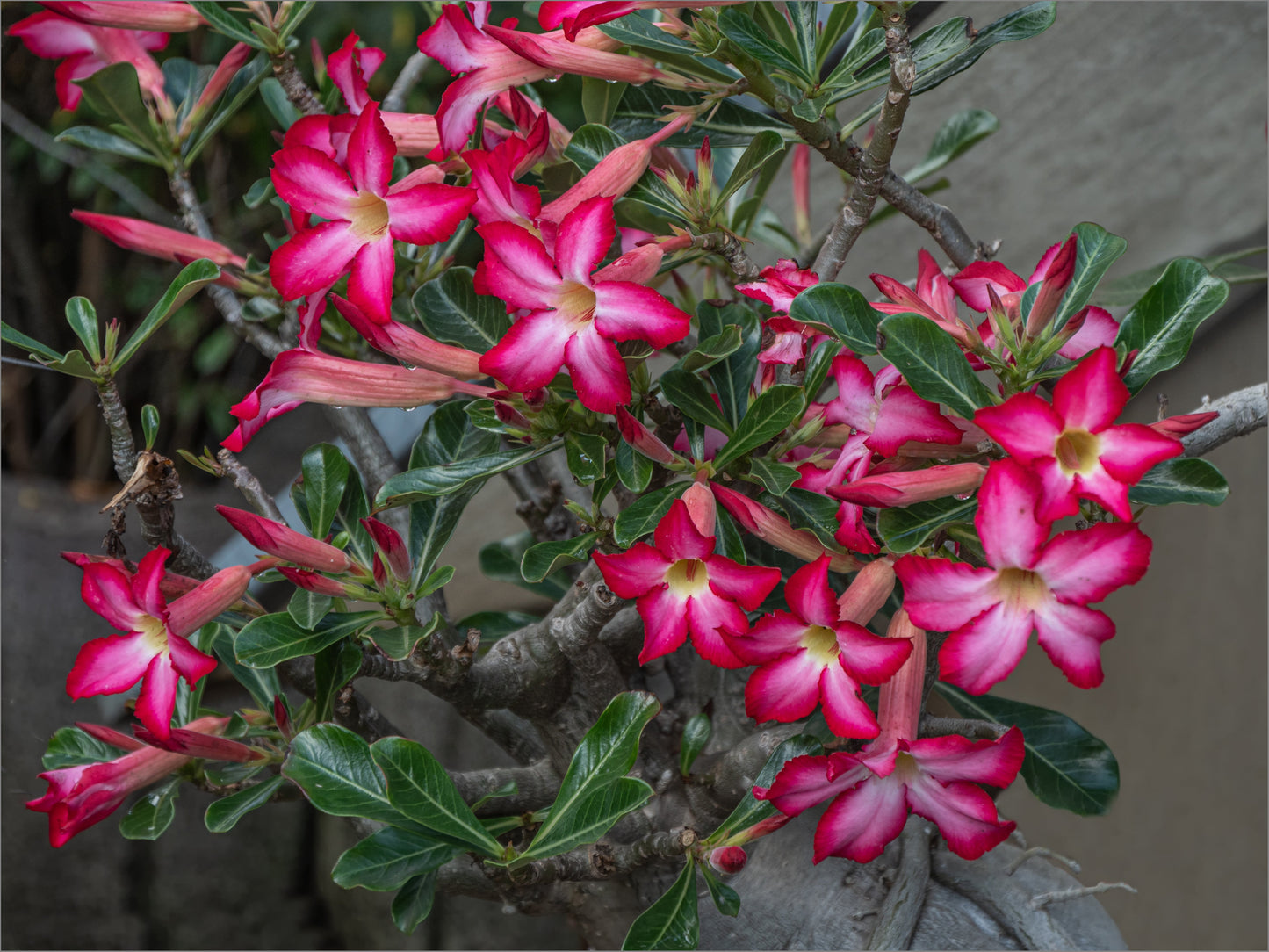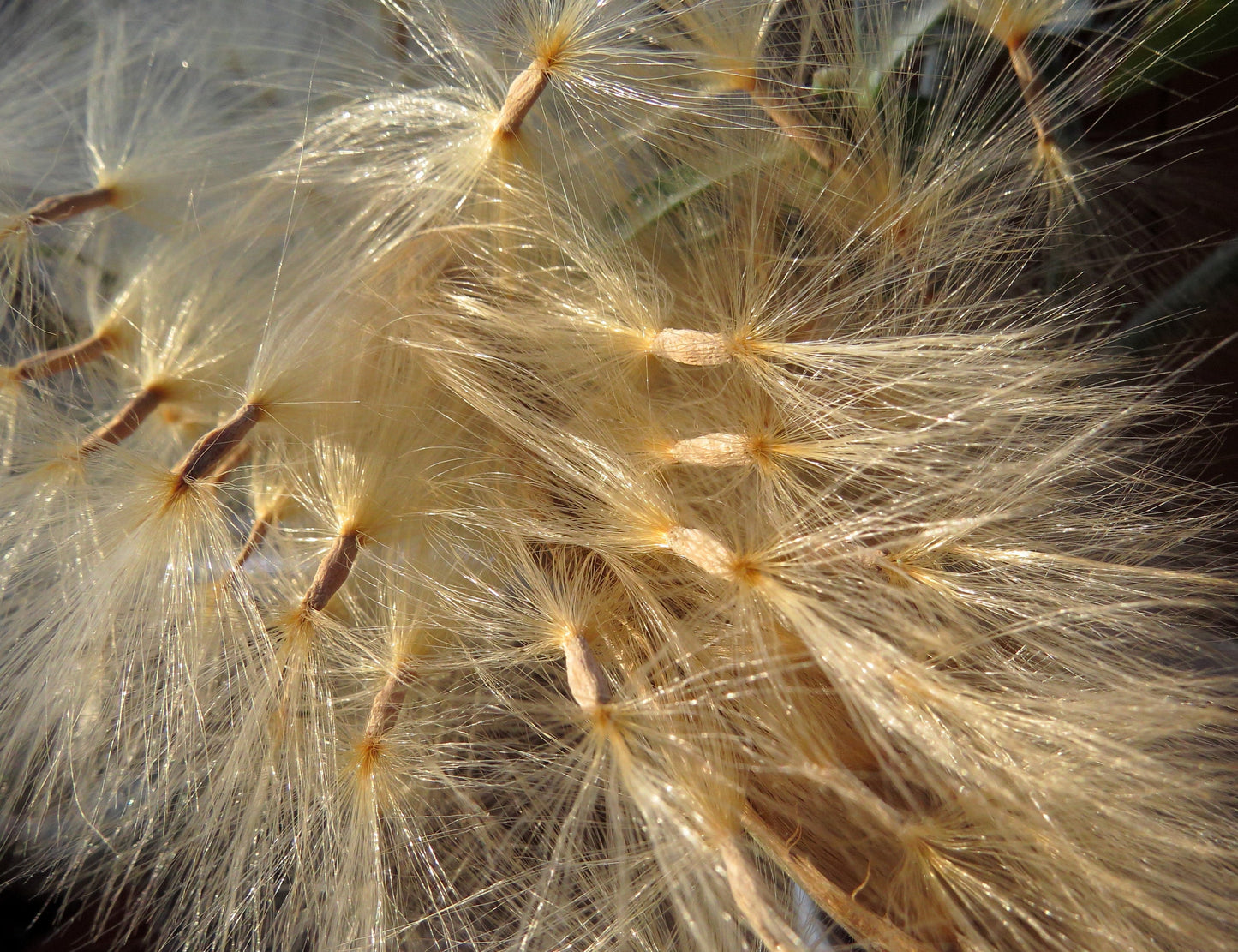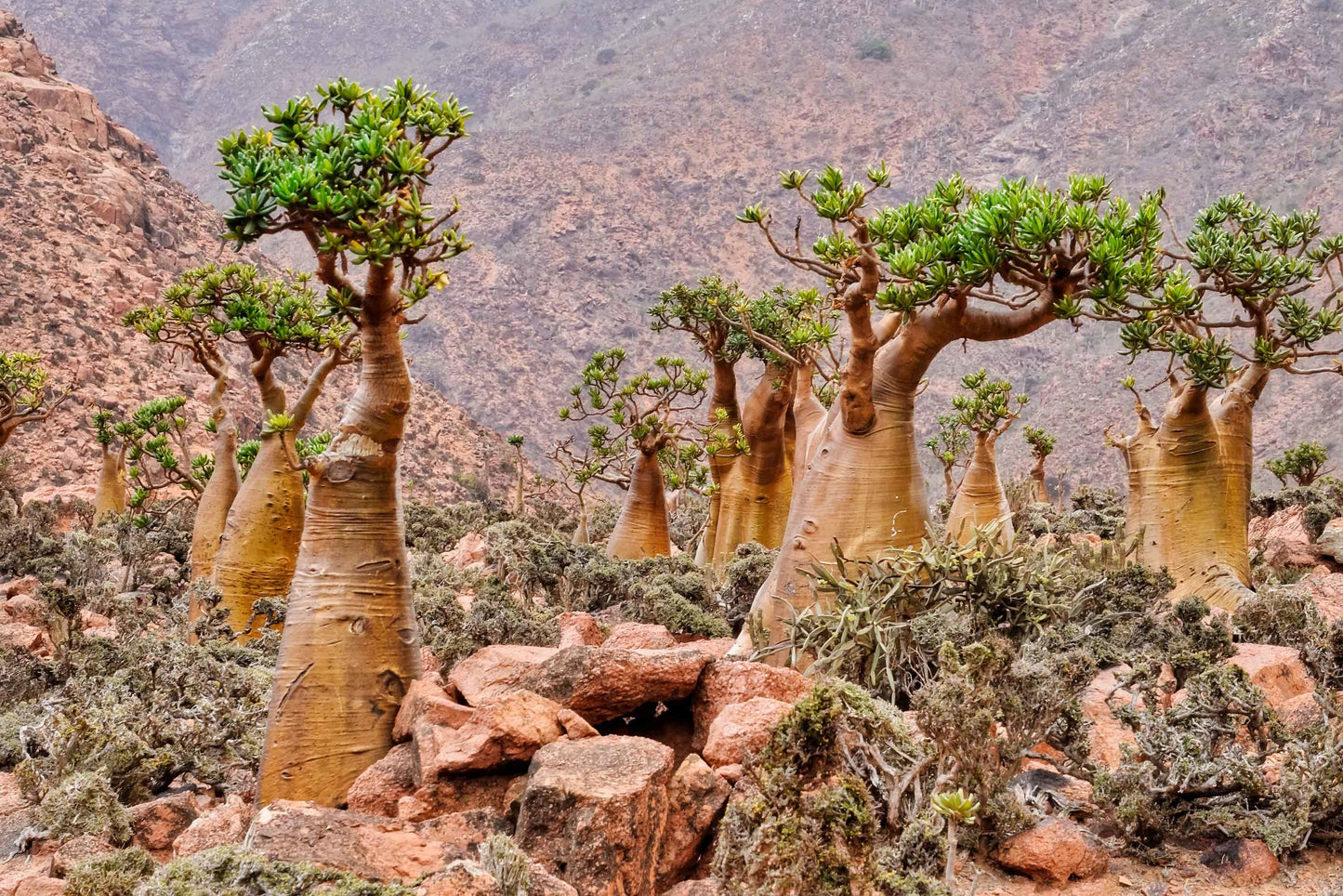Floridaseeds
Desert Rose Adenium obesum 10 Seeds
Desert Rose Adenium obesum 10 Seeds
Couldn't load pickup availability
Adenium obesum, commonly called desert rose, is a thick-stemmed sparsely-leaved perennial succulent that is native to semi- arid, sub-Saharan regions of eastern and southwestern Africa plus the Arabian peninsula. In the wild, this plant will eventually rise to 6-9' tall, but will grow much smaller in containers. It forms a broad, swollen, often grotesque caudex (usually partially buried underground) from which rise twisted leafless gray-green to brown branches. Leathery, spirally-arranged, fleshy, ovate, gray-green leaves (to 4" long) appear at the stem tips. Narrow, bell-shaped, salverform flowers (to 2" across), each with five spreading lobes and five protruding stamens, are red, pink or rose with white to pale yellow throats. In the wild, flowers bloom in summer with some irregular continued bloom throughout the year. As houseplants, flowers typically bloom only in summer. Milky plant sap is poisonous.
Winter hardy to USDA Zone 11. North of USDA Zone 11, plants should be grown in containers and overwintered indoors. In containers, desert rose is best grown in a loose, sandy or gravelly, well-drained soil mix in full sun. Plants have excellent heat tolerance. Apply regular moisture during periods of growth, but allow soils to dry between waterings. Regular applications of fertilizer in spring will help promote flowering. Plants can be left outdoors in sunny locations during the summer. As soon as temperatures begin to dip below 55 degrees F. in autumn, bring containers indoors to sunny but cool locations with reduced watering. Plants usually lose their leaves in winter and go into a dormancy-like period. For container plants, the best caudex usually develops from seed-grown plants.
Growing Instructions for the Desert Rose
- Soak the seed in warm water for several hours. 2. The seeds like sandy, well-drained soil. Fill a pot with moist cactus mix or used a mixture of sand and peat moss, perlite or vermiculite. Use a pot that has drainage holes in the bottom. 3. Put the seeds on the surface of the soil. 4. Cover the seeds with a thin layer of soil. 5. Water the seeds. Keep the soil moist but not wet. 6. Place the pots in an area with warm temperatures in part shade. Don’t put them in direct sunlight. 7. When the seedlings are a few inches tall, they can be transplanted.
Materials
Materials
Shipping & Returns
Shipping & Returns
Dimensions
Dimensions
Care Instructions
Care Instructions
Share


